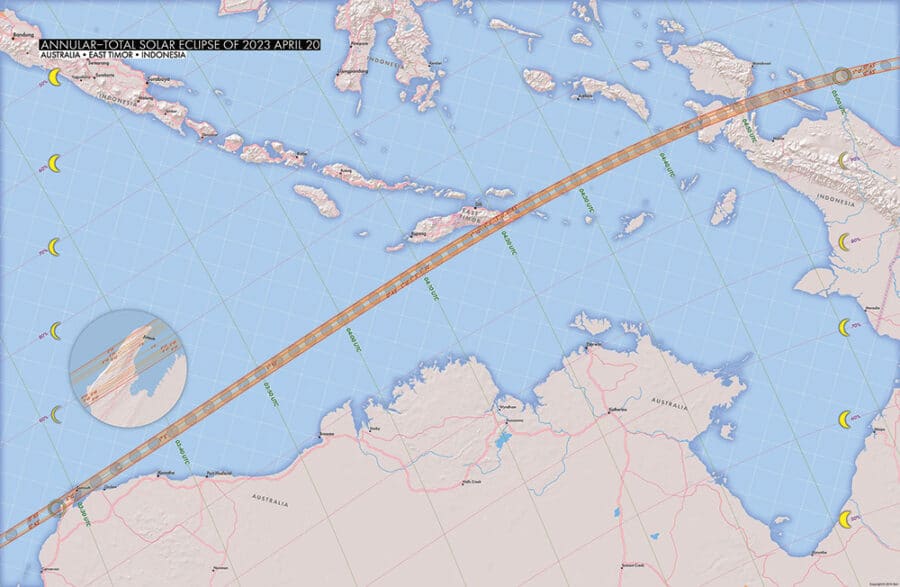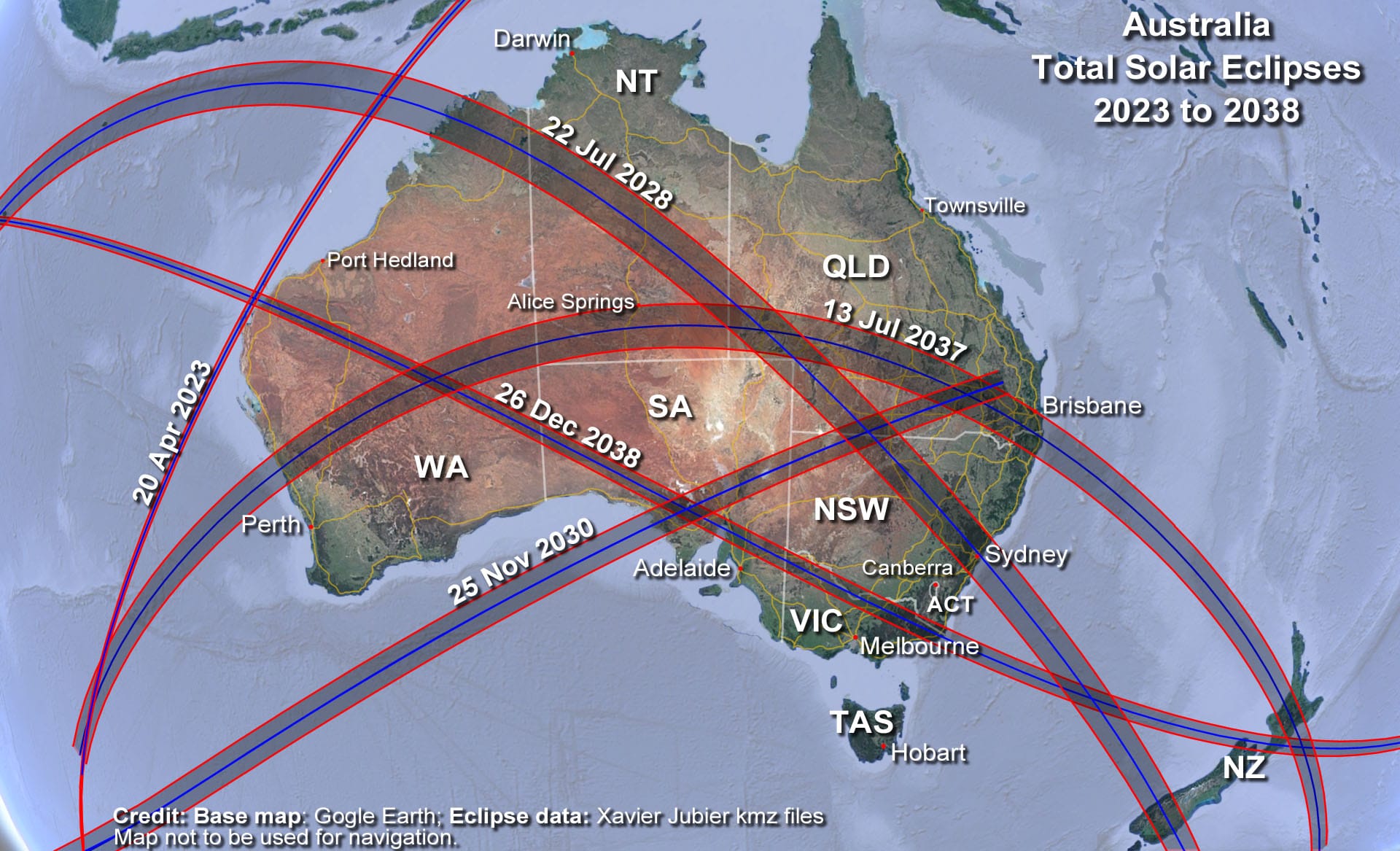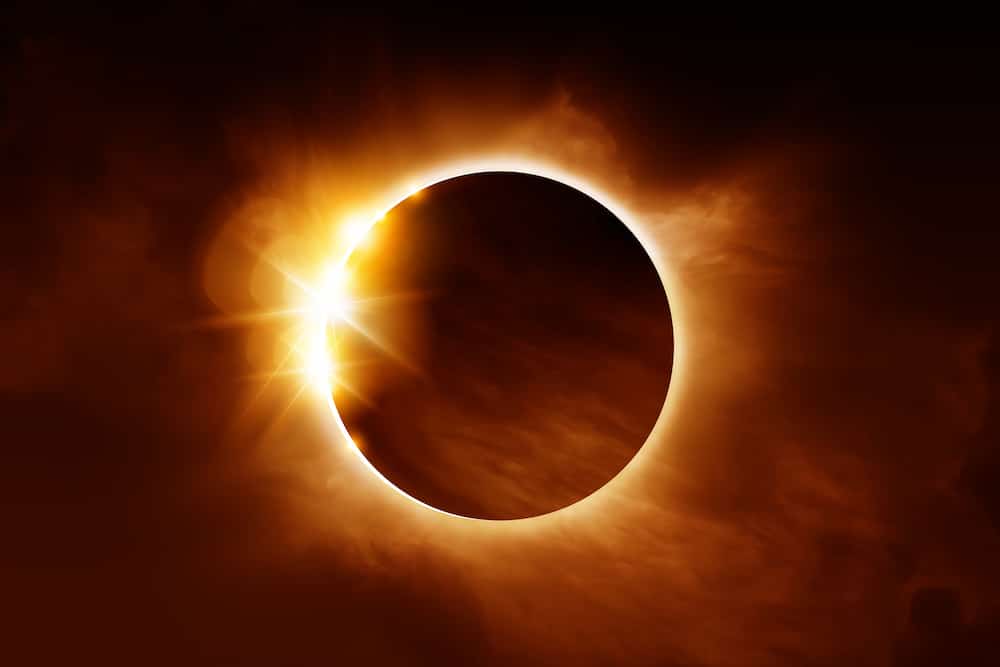For stargazers, “Australia really is the lucky country,” Professor John Lattanzio, President of the Astronomical Society of Australia (ASA), believes. Over the next 15 years, five total eclipses will be visible in various parts of the country.
A total eclipse occurs when the moon completely blocks the sun.
The first is next week. At 1.29 pm (11.29 am local time) on Thursday 20 April, the sun will disappear over the Ningaloo region of Western Australia. It will reappear a minute later.
“This total eclipse is exceedingly rare,” Professor Lattanzio said. “Any single location on Earth is only likely to see a total eclipse once every few hundred years.
“The rest of Australia will experience a partial eclipse, and a chance to prepare for the big one, a total eclipse over Sydney in 2028.”
This unusual solar eclipse will only be observable on land from the North West Cape area in Western Australia, as well as Timor-Leste and Indonesia.

A solar eclipse occurs when the moon passes between the Sun and Earth, casting a shadow on the Earth that either partially or fully blocks the face of the sun.
Solar eclipses are rare in the Solar System. Of the 200 confirmed moons orbiting six major planets, only the Earth’s moon is the right size and distance from its planet to neatly cover and obscure the solar disk and reveal the sun’s wispy corona.
A total solar eclipse occurs when the moon completely blocks the sun. Totality – the period of time the sun is totally obscured – only lasts up to seven minutes. It only occurs on the path of totality – the narrow path of the moon’s shadow moving across the Earth’s surface.
During an eclipse, two shadows are cast: the umbra, the dark centre of the eclipse shadow; and the penumbra, a type of half-shadow.
Although a solar eclipse of some kind occurs somewhere on Earth at least twice each year, it is only in some of these events that the moon completely covers the sun. Sometimes the umbra misses Earth altogether, passing ‘above’ or ‘below’ our planet.
All of Australia will experience a partial eclipse. The closer an observer is to the path of totality, the more the sun is obscured.

Australians will have to wait five years for the next eclipse. On 22 July 2028, the eclipse’s path of totality will cross the Kimberley in Western Australia, the Northern Territory, southwest Queensland, and NSW, and pass centrally through Sydney.
On 25 November 2030, the path of totality will pass across South Australia, northwest NSW, and southern Queensland, and end at sunset in southeast Queensland.
The next eclipses will not be for another seven years after that. On 13 July 2037, the path of totality will pass through southern Western Australia, southern Northern Territory, and western Queensland to finish over Brisbane and the Gold Coast.
Finally, on 26 December 2038, the path of totality will pass through central Western Australia, South Australia, and along the NSW / Victorian border.

“Solar eclipses are spectacular,” Professor Lattanzio said.
However, they can also be dangerous to look at.
“Never look directly at the Sun,” Dr Hessom Razavi of the Royal Australian and New Zealand College of Ophthalmologists (RANZCO), and the Lions Eye Institute, warns. “It can cause serious and permanent eye damage, and that’s true even during a solar eclipse. Children’s eyes are especially vulnerable to damage.”
According to the ASA, the best ways to observe an eclipse are through:
- special-purpose ‘eclipse glasses’ or hand-held solar viewers with solar filters that meet the international standard
- using pinhole projection through a large card with a two-millimetre hole in the centre to project an image of the Sun onto another surface held about a metre away.
RANZCO advises that using solar eclipse glasses still carries some risks, so people must make sure their glasses meet the ISO 12312 2 standard. and that they read and follow all safety advice and precautions, ensuring that there are no scratches or other damage. According to RANZCO, the only way to guarantee the prevention of solar retinopathy is to avoid all forms of direct sun viewing.
RANZCO’s advice for the public can be found at ranzco.edu/wp-content/uploads/2023/03/RANZCO-Position-Statement-For-the-General-Public-Solar-Retinopathy_2023-1.pdf.
The ASA has created a comprehensive website at eclipse.asa.astronomy.org.au including sections on
- Safety: eclipse.asa.astronomy.org.au/how-to-view.
- The path of the eclipse: eclipse.asa.astronomy.org.au/eclipse-australia-2023/
- The next five eclipses: eclipse.asa.astronomy.org.au/future-eclipses/



